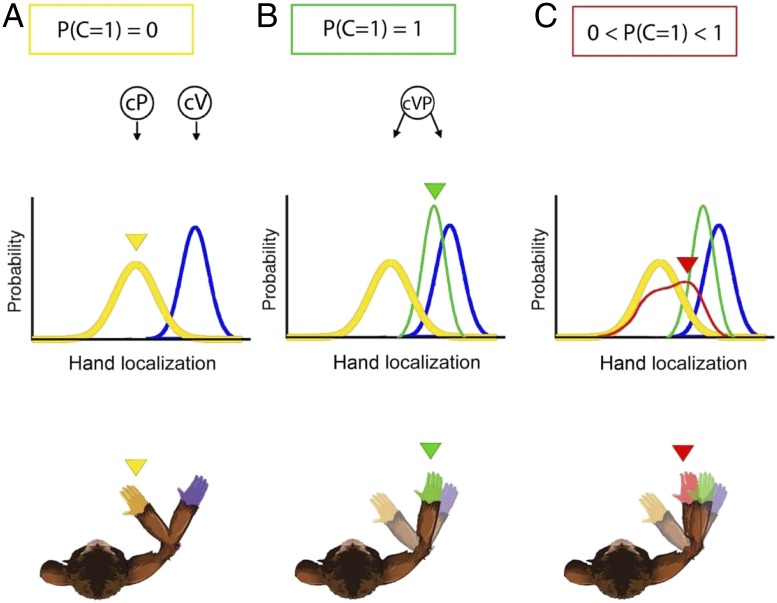Fig. 1.
Schematic illustration of the BCI and the FF models used in Fang et al. (8). During the experiment, subjects received both visual and proprioceptive signals from the right arm. According to the BCI model, the final arm ownership percept depends on the probability of a common cause (P(C = 1)) for the visual and proprioceptive signals. (A) P(C = 1) = 0: Vision and proprioception seem to come from 2 different sources (as is typically the case for very large disparities); as a consequence, unisensory visual (blue) and proprioceptive (yellow) signals are not fused. (B) P(C = 1) = 1: In classical optimal integration—or a forced fusion model—a single source is always assumed, and unisensory visual (blue) and proprioceptive (yellow) signals are integrated into the visuoproprioceptive (green) estimate. Each unisensory signal contributes to the visuoproprioceptive estimate in proportion to the relative reliability of each signal. (C) 0 < P(C = 1) < 1: In the BCI model used by Fang et al., the 2 possible causal structures are combined according to their relative probabilities; thus, the final arm ownership percept (red) is a combination of the unisensory and fused estimates.

